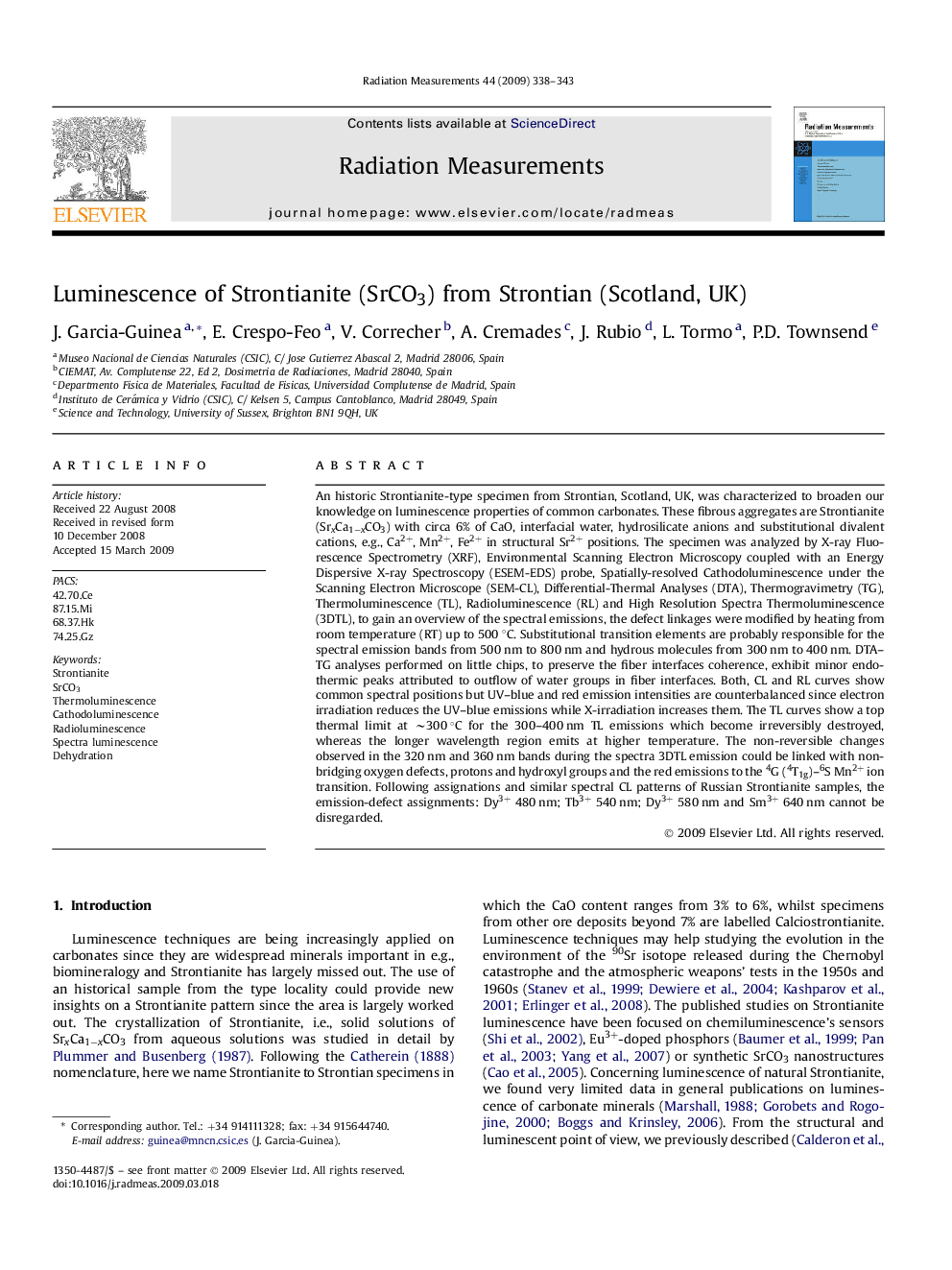| کد مقاله | کد نشریه | سال انتشار | مقاله انگلیسی | نسخه تمام متن |
|---|---|---|---|---|
| 1881821 | 1043180 | 2009 | 6 صفحه PDF | دانلود رایگان |

An historic Strontianite-type specimen from Strontian, Scotland, UK, was characterized to broaden our knowledge on luminescence properties of common carbonates. These fibrous aggregates are Strontianite (SrxCa1−xCO3) with circa 6% of CaO, interfacial water, hydrosilicate anions and substitutional divalent cations, e.g., Ca2+, Mn2+, Fe2+ in structural Sr2+ positions. The specimen was analyzed by X-ray Fluorescence Spectrometry (XRF), Environmental Scanning Electron Microscopy coupled with an Energy Dispersive X-ray Spectroscopy (ESEM-EDS) probe, Spatially-resolved Cathodoluminescence under the Scanning Electron Microscope (SEM-CL), Differential-Thermal Analyses (DTA), Thermogravimetry (TG), Thermoluminescence (TL), Radioluminescence (RL) and High Resolution Spectra Thermoluminescence (3DTL), to gain an overview of the spectral emissions, the defect linkages were modified by heating from room temperature (RT) up to 500 °C. Substitutional transition elements are probably responsible for the spectral emission bands from 500 nm to 800 nm and hydrous molecules from 300 nm to 400 nm. DTA–TG analyses performed on little chips, to preserve the fiber interfaces coherence, exhibit minor endothermic peaks attributed to outflow of water groups in fiber interfaces. Both, CL and RL curves show common spectral positions but UV–blue and red emission intensities are counterbalanced since electron irradiation reduces the UV–blue emissions while X-irradiation increases them. The TL curves show a top thermal limit at ∼300 °C for the 300–400 nm TL emissions which become irreversibly destroyed, whereas the longer wavelength region emits at higher temperature. The non-reversible changes observed in the 320 nm and 360 nm bands during the spectra 3DTL emission could be linked with non-bridging oxygen defects, protons and hydroxyl groups and the red emissions to the 4G (4T1g)–6S Mn2+ ion transition. Following assignations and similar spectral CL patterns of Russian Strontianite samples, the emission-defect assignments: Dy3+ 480 nm; Tb3+ 540 nm; Dy3+ 580 nm and Sm3+ 640 nm cannot be disregarded.
Journal: Radiation Measurements - Volume 44, Issue 4, April 2009, Pages 338–343